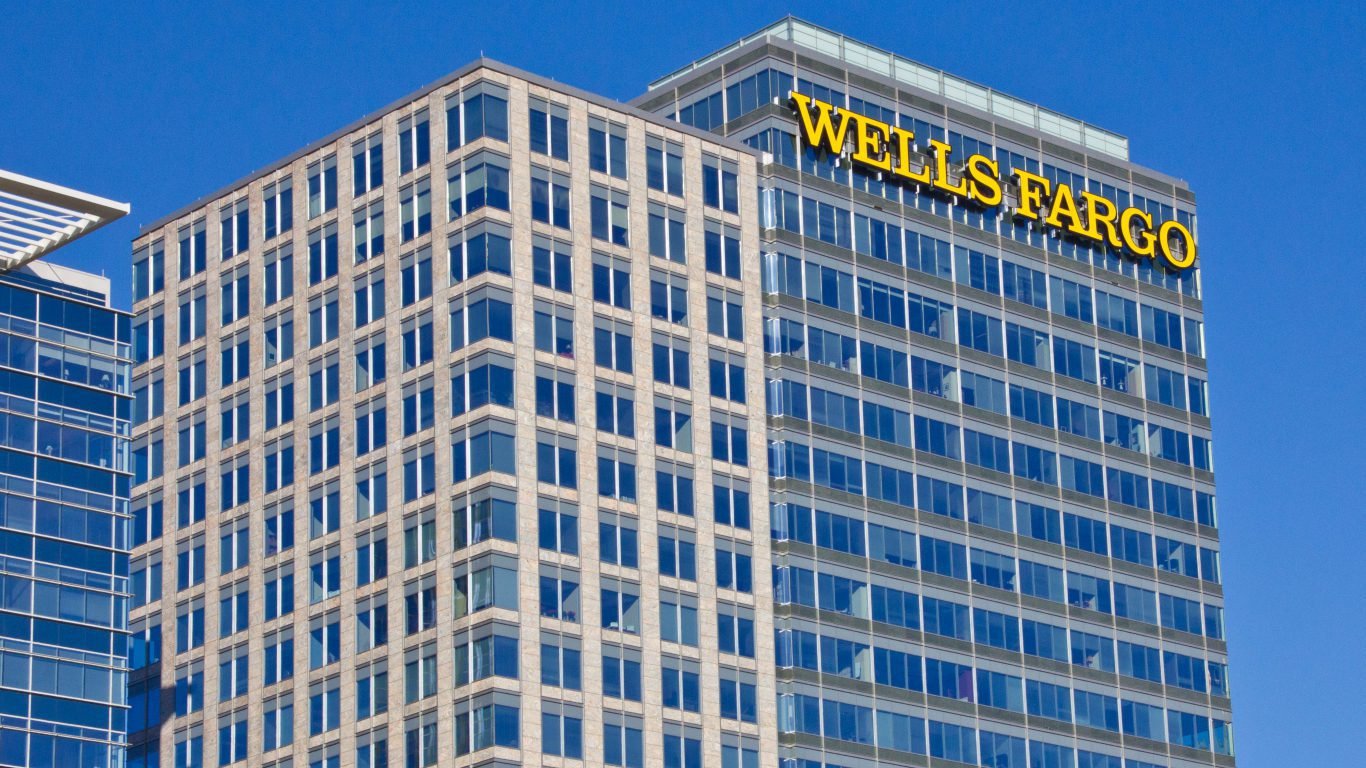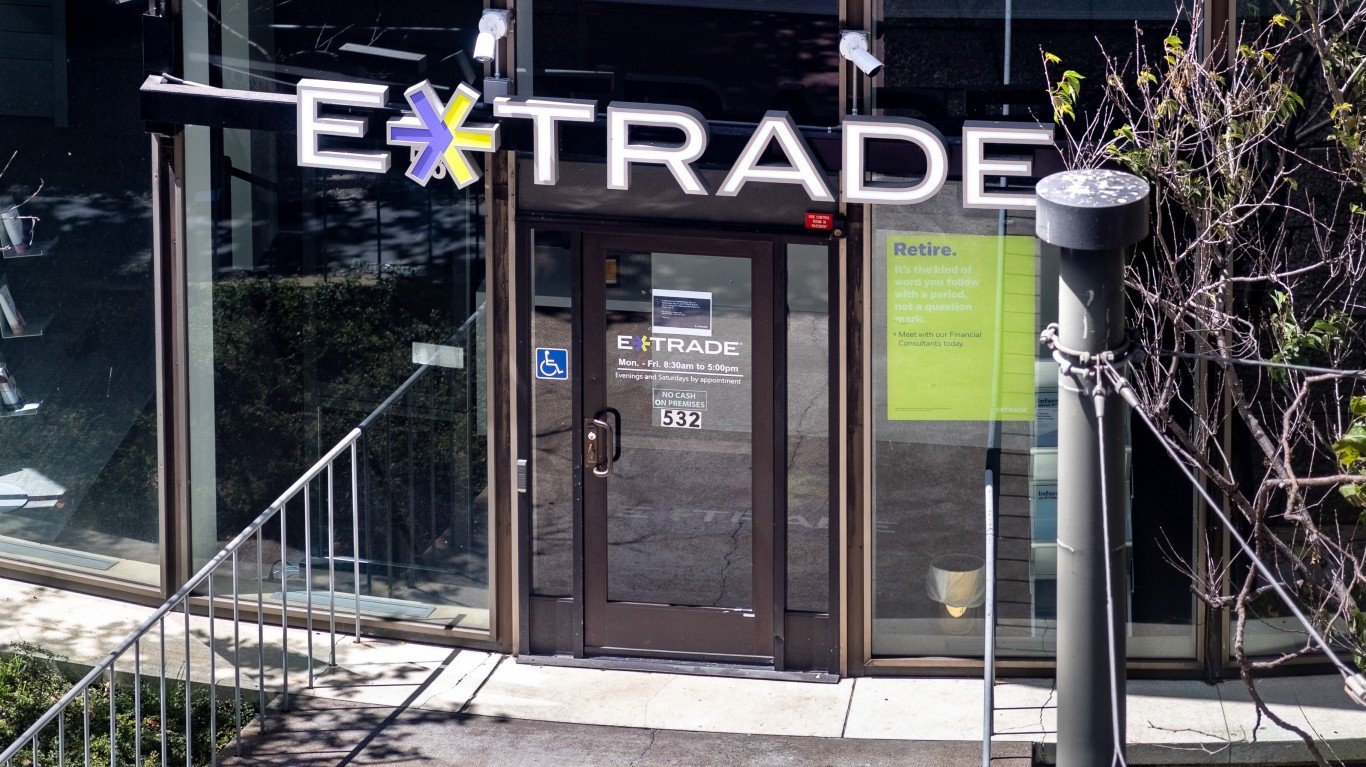

The raging bull market in stocks has been no secret. The major indexes are up exponentially from the panic-induced lows of the Great Recession, and 2019 saw nearly a 29% gain in the S&P 500. The problem of addressing the stock market as a whole is that it’s really a market of stocks and many stocks perform quite poorly, even in the strongest of bull markets. Wells Fargo & Co. (NYSE: WFC) has seen its reputation and its business practices damaged and its shares have suffered. The bad news for Wells Fargo stockholders may not be totally over.
Just a day after Piper Sandler downgraded Wells Fargo to Neutral from Overweight on the heels of its earnings report, RBC Capital Markets has issued a more ominous downgrade. RBC dropped Wells Fargo to Underperform from Market Perform, effectively telling clients to “Sell rather than hold.” The big rub here is that the firm’s price target was lowered to $42 from $48 in this call. That did not prevent shares from rising (up about 1% on last look), but that implies that Wells Fargo shares would have about 13% downside from Wednesday’s closing price of $48.32.
Despite having a new CEO running Wells Fargo, a decline after earnings on Tuesday and a follow-on retreat on Wednesday had the shares down close to 10% year to date. That is much worse performance against some of the other key banks, and RBC’s $42 target now matches the lowest analyst target from all the Wall Street sell-side analyst community. It is also $10 lower than after Piper Sandler downgraded it.
Wells Fargo remains under restrictions with the Federal Reserve, and the bank was given a mandate not to grow its assets until the bank is able to resolve its internal governance issues. It replaced multiple board members, has gone through a long and painful CEO transition and is more or less capped at maintaining a balance sheet at $1.95 trillion until the Federal Reserve clears its operations. Until it can grow its assets again, and with a cloud still over its investment and management functions, it is just difficult to see how Wells Fargo can grow its earnings and revenues very much.
At the start of 2020, Wells Fargo had a mere $51.79 consensus target price from Refinitiv, less than the 2019 closing price of $53.80 and implying a mere 0.1% total return after lumping in its 3.8% yield. The latest consensus target was only a tad lower, but with downgrades like this and other price target cuts after earnings, the consensus figure will be closer to $50.
Wells Fargo’s recently reported earnings of $0.60 per share and $19.9 billion in revenue, down handily from the $1.21 per share and $20.98 billion posted in the fourth quarter of 2018. While the consensus estimates had called for $1.12 per share in earnings and revenue of $20.14 billion, Wells Fargo noted that the earnings this past quarter were negatively affected by litigation accruals to the tune of $0.33 per share. During the latest quarter, average loans were $956.5 billion, up by $10.2 billion from the third quarter.
Total average deposits for the quarter were $1.3 trillion, $53.0 billion higher than in the prior quarter, which Wells Fargo attributed primarily due to growth in both commercial and consumer deposits. Most banks are still seeing their book value per share metrics rise, but Wells Fargo’s book value per common share was $40.31, after having been $40.48 per share in the third quarter.
Wells Fargo’s segments are also showing some pressure at the core. Its community banking revenues were down 8.2% year over year at $10.52 billion, and even its wholesale banking revenues decreased by 3.7% to $6.67 billion. The firm’s wealth and investment management revenues increased by just 2.9% to $4.07 billion, despite such positive performance in the financial markets.
One core metric, the net interest margin, fell by another 13 basis points from the third quarter to the fourth quarter, after having fallen by 16 basis points the prior quarter. The bank’s net interest income was down 3.7% from the third quarter and down 5.5% from a year earlier.
While RBC’s target would imply about 15% downside from the current price, a recent target cut from Credit Suisse came with a so-called Grey Sky Scenario, a more bearish case if things do not improve, that went from an already dismal $40 down to $39. That downside case involves further erosion to book value and lower earnings coming from a combination of slower economic growth, market value declines and higher credit costs making its share price get more in line with book value per share rather than the premium.
Wells Fargo shares were up about 1.7% at $49.14 in the noon hour on Thursday, and the 52-week trading range is $43.34 to $54.75.
It remains unclear if the newly instated CEO Charlie Scharf will be able to get the bank’s operational restrictions removed or reduced sooner rather than later. Most analysts do not expect that to suddenly vanish. Perhaps he should be asking Warren Buffett and his near 9% stake (via Berkshire Hathaway) to start talking about how excited he is with the new leadership at the helm.
Sponsored: Attention Savvy Investors: Speak to 3 Financial Experts – FREE
Ever wanted an extra set of eyes on an investment you’re considering? Now you can speak with up to 3 financial experts in your area for FREE. By simply
clicking here you can begin to match with financial professionals who can help guide you through the financial decisions you’re making. And the best part? The first conversation with them is free.
Click here to match with up to 3 financial pros who would be excited to help you make financial decisions.
Thank you for reading! Have some feedback for us?
Contact the 24/7 Wall St. editorial team.



